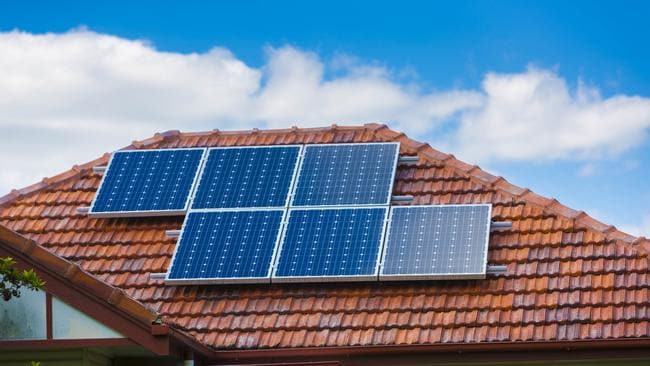THE IDEA OF “MAKING EVERY BUILDING A MINI SOLAR POWER STATION” IS PURE ECO-FANTASY..!

There has been a lot of media hype about putting PV panels on every rooftop so that “every home becomes a mini solar power station”. But the cloudy climates typical of NW Europe means the solar potential of most houses is very limited, and most roofs make unsuitable solar platforms for a number of reasons…
-
- roof does not face the optimum sun-seeking direction
- over-shadowed by adjacent buildings or big trees
- “hipped” roofs, gables, chimneys, etc, get in the way
[stextbox id=’info’]Paradoxically the most efficient solar roofs are on low-rise buildings in low density sprawl cities like Los Angeles – but low-density sprawl is THE VERY CONDITION WHICH CAUSES ENERGY WASTAGE IN THE FIRST PLACE..!
COULD SKYSCRAPERS AND OFFICE BUILDINGS BECOME SOLAR POWER STATIONS IF THEIR WINDOWS ARE FITTED WITH SOLAR GLASS..?
[stextbox id=’info’ caption=’Skyscraper Green-Washing ‘] Skyscraper developers are trying to “Green-Wash” their projects by suggesting that they can double as “Solar Power Stations”. But facing skyscrapers with solar glass doesn’t make economic or practical sense due to 1) their vertical walls and 2) the sun is often obscured by adjacent buildings, and a large part of any building never even faces the sun. Solar Glass is also very expensive, and their conversion efficiency is far lower. You’re never going to achieve anywhere near the oft-quoted (and over-optimistic) 20% efficiency with vertical walls, as solar panels need to be slanted for maximum efficiency.
The only type of building where BIPV would make any real economic sense is a pyramid.
THE INCLINED WALLS OF A PYRAMID WOULD BE THE OPTIMUM SOLAR ENERGY GATHERING PLATFORM..!

- PYRAMID POWER
- ENORMOUS SURFACE AREA
- LESS LIKELY TO BE OVER-SHADOWED
- 3 OF ITS 4 SIDES FACE THE SUN DURING THE DAY
- WALL ANGLE CAN BE OPTIMISED ACCORDING TO LATITUDE
- EVERY SURFACE CAN BE UTILISED – EVEN WINDOWS AND PATIO SHUTTERS
[stextbox id=’info’ caption=’What would be the ideal pyramid wall angle? ‘] London is 51.5deg North, so I am guessing that the average year-round inclination of the midday sun would be (90-51.5) 38.5deg above the horizon It would therefore make sense to build a Δ with quite steep sides so that the midday sun strikes the walls at the optimum “solar-effective” angle. For Northern Europe around 75 deg. might be an optimal wall angle. Steeper sides result in smaller patios but more inside space, which makes sense in temperate climates. In the warmer climates of lower latitudes, eg Australia, Δ might have 60-70 degree walls, thus permitting larger and deeper patios suitable for outside dining and entertainment.
Q & A
Q. How much of the exterior will be faced with solar collectors..?
A. Almost the entire surface can be made to be “solar-active”.
Q. If the entire wall surface is covered with PV, how can you also have open patios..?
A. Patios enclosed by shutters fitted with “Solar Glass”– an example of BIPV (see below)
Q. So no power will be generated when the shutters are open?
A. If windows/shutters are designed to open by jack-knifing upwards they would continue to generate electricity, albeit at a reduced level.
[stextbox id=’info’ caption=’PATIOS ARE NOT USED OFTEN ‘]Unless their occupants are retired, or on holiday, most people do not have the time to use their patios often. On sunny days they can also be uncomfortably hot, so they tend to be used in the late afternoon or around sunset. If the patio solar-shutters are kept closed, this would enable them to generate power throughout the day.
[stextbox id=’info’ caption=’Building Integrated Photovoltaics (BIPV) ‘]BIPV generates power from the sun whilst forming an integral part of the building. Examples of BIPV can be seen on roof shingles, awnings, walls, facades, skylights and window shutters. The overall cost of the system can be reduced significantly when one product performs two useful functions.

